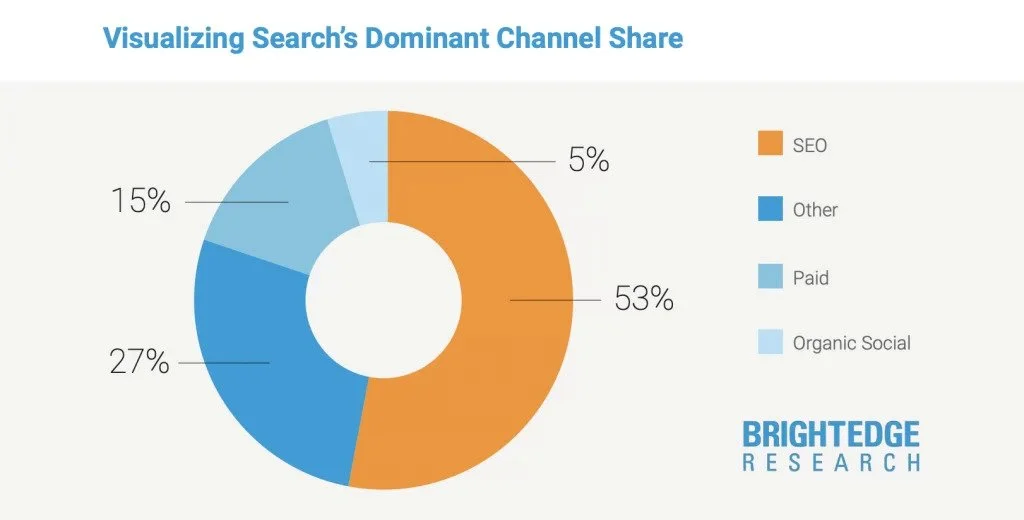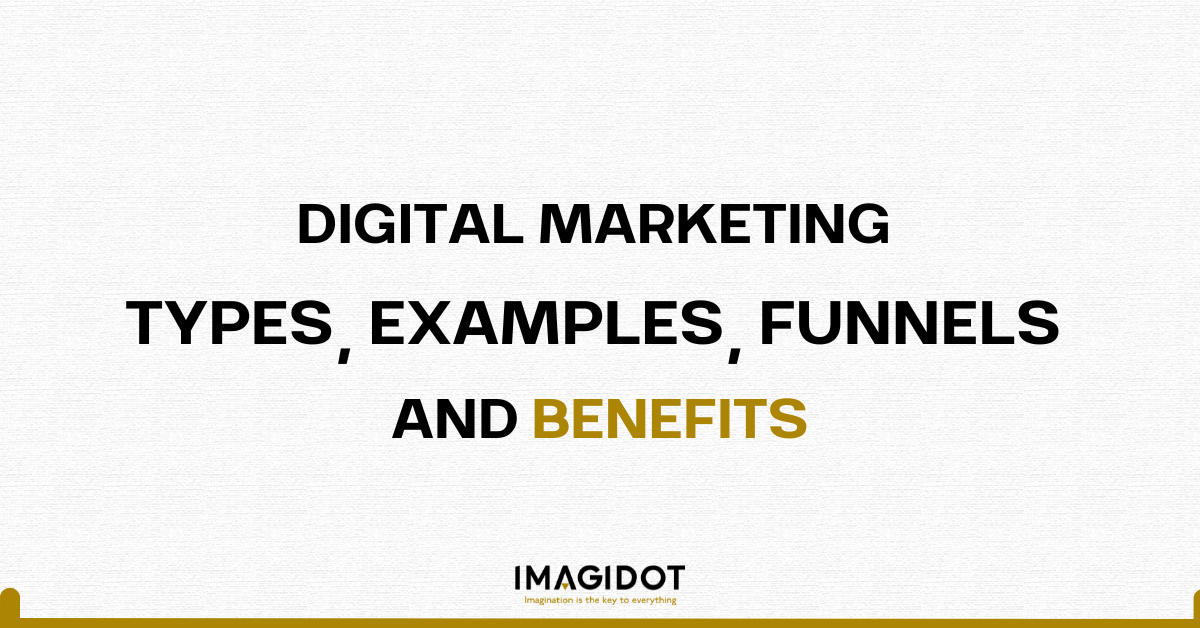The digital world resembles a bustling marketplace where everyone vies for the attention of potential customers. With the right strategy, you won’t just blend in—you’ll shine.
As the world has moved online, so have your potential customers.
But what exactly is online marketing?
If terms like SEO, PPC, or social media algorithms have ever overwhelmed you, you’re in the right place. Digital marketing—also known as online marketing—might sound complex, but it’s simpler than its technicalities suggest.
Once you grasp the basics, it’s like unlocking a treasure chest of opportunities for your business.
With the right knowledge and digital marketing tools, you can position your business in front of the people who need what you offer.
The best part? You can measure whether your business is reaching the right people and understand the ways you’re reaching them—eliminating guesswork.
By the end of this guide, you’ll know what online marketing is, aka digital marketing, and how to effectively use it to grow your online presence.
So, let’s dive in!
What is Digital Marketing?
Digital marketing encompasses all forms of online marketing using the internet’s tools and platforms—simply put, it’s online marketing.

From the emails in your inbox to the ads on your Instagram feed, digital marketing allows businesses to connect with their audience where they spend most of their time—on the internet.
In essence, digital marketing is the use of digital channels like search engines, social media, email, and websites to promote a product or service. It’s the bridge between any online business and its potential customers.
Whether you run a small blog or a large eCommerce site, digital marketing helps you attract new customers, engage with them, and drive more sales—all while maintaining smooth operations for your existing customers.
What makes digital marketing special is its targeted approach. You can focus on reaching the people most likely to be interested in what you offer, based on their behaviors, interests, and demographics.
Consider the last time you Googled something or saw an ad while scrolling through Instagram. That’s digital marketing in action!
The Importance of Digital Marketing
You may wonder what digital marketing is and why it matters. It’s crucial because it allows you to compete head-to-head with your competitors, even on a global scale.
Whether you’re an online startup like IMAGIDOT or a large e-commerce corporation like Amazon, digital marketing enables you to reach a vast audience without a massive budget.
Digital marketing also makes your business easily accessible to potential customers, whether you’re promoting a local business or expanding your global reach.
Here are some compelling stats from popular sources:
- Companies that blog get 97% more links to their websites. (HubSpot)
- Over 5 billion people are using the internet today. (Statista, 2024)
- Search engines drive 53% of all website traffic. (Bright Edge, 2024)

The numbers are undeniable. If you’re not showing up where your customers are, your competitors will.
Here are the main reasons why digital marketing is important:
- Builds Trust: Engage directly with your audience through email, social media, and personalized ads to build strong, trusting relationships.
- Cost-Effective: Target specific audiences efficiently, reaching the right people without wasting resources.
- Measurable Results: Track your success in real-time with tools like Google Analytics and Facebook Insights, gaining detailed insights into your campaigns’ performance.
Types of Digital Marketing
There are various types of digital marketing, each serving different purposes. Choosing the right one can be challenging, so here’s an overview to help you decide:
- Search Engine Optimization (SEO): SEO focuses on getting your website to appear on the first page of search engines like Google. Good SEO increases organic (unpaid) traffic to your website.
- Social Media Marketing: Promotes your business through platforms like Facebook, Instagram, Twitter, and LinkedIn, helping you connect with customers, build your brand, and drive traffic to your website.
- Email Marketing: The most successful and cost-effective form of digital marketing, allowing businesses to build direct relationships with customers through personalized emails.
- Pay-Per-Click (PPC) Advertising: A model where advertisers pay a fee each time someone clicks on their ad, used for driving website visits, leads, and sales.
- Affiliate Marketing: Promoting other products and earning a commission on sales, widely used today by both small businesses and large corporations.
- Content Marketing: Involves creating and sharing content like blogs, videos, and infographics to attract and engage your audience.
Additional forms include Influencer Marketing, Mobile Marketing, and more.
How Digital Marketing Works
Digital marketing works by placing your brand in front of the right people at the right time. The key is understanding the digital marketing funnel, which outlines the customer journey:
- Awareness: Create awareness of your business through websites or social media.
- Consideration: Potential customers evaluate your business, comparing it with others.
- Conversion: Turn interested prospects into paying customers through targeted ads and strong calls to action.
- Retention: Maintain relationships with existing customers through email marketing.
- Advocacy: Build trust and encourage word-of-mouth promotion.
Advantages of Digital Marketing Over Traditional Marketing
While traditional marketing isn’t dead, digital marketing offers several advantages:
- Cost-Effective: Digital marketing is more affordable than traditional ads like TV or billboards.
- Measurable Results: Track and analyze the success of your campaigns in real-time.
- Specific Targeting: Target your audience based on their interests, behaviors, and demographics.
- Direct Relationship with the Audience: Engage in two-way communication that builds trust.
How to Get Started with Digital Marketing
If you’re new to digital marketing, here’s a step-by-step guide:
- Choose a Niche: Research different niches within your industry and select the one that suits you best.
- Learn the Basics: Take online courses, such as those offered by AADME Digital Marketing Platform.
- Start a Blog or Build a Portfolio: Showcase your work and strategies.
- Focus on One or Two Platforms: Don’t spread yourself too thin—start with one or two platforms.
- Network within Your Niche: Build relationships with industry experts and peers.
Tools and Resources for Learning Digital Marketing
To master digital marketing, use tools like Google Analytics, SEMrush, HubSpot Academy, and platforms like Udemy and Coursera for online courses.
Conclusion
Digital marketing may seem complex, but once you understand the basics, you’ll see how easy it is to apply to your business or career.
Whether you’re just starting out, already running a small business, or looking to expand online, this guide has equipped you with the fundamentals of digital marketing.
So, what are you waiting for? Dive into digital marketing and start applying its strategies today!
FAQs
- Is Digital marketing only for big businesses?
No, digital marketing is for all businesses, big or small. - Do I need to be on every social media platform?
No, focus on the platforms that best suit your business. - What is digital marketing in simple words?
It’s using tools like SEO, social media, and email marketing to promote your business online. - What are the types of digital marketing?
Content marketing, SEO, PPC, social media, email marketing, and more. - How much can one earn through digital marketing?
Earnings have no limits if you keep learning and adapting to new concepts in digital marketing.


